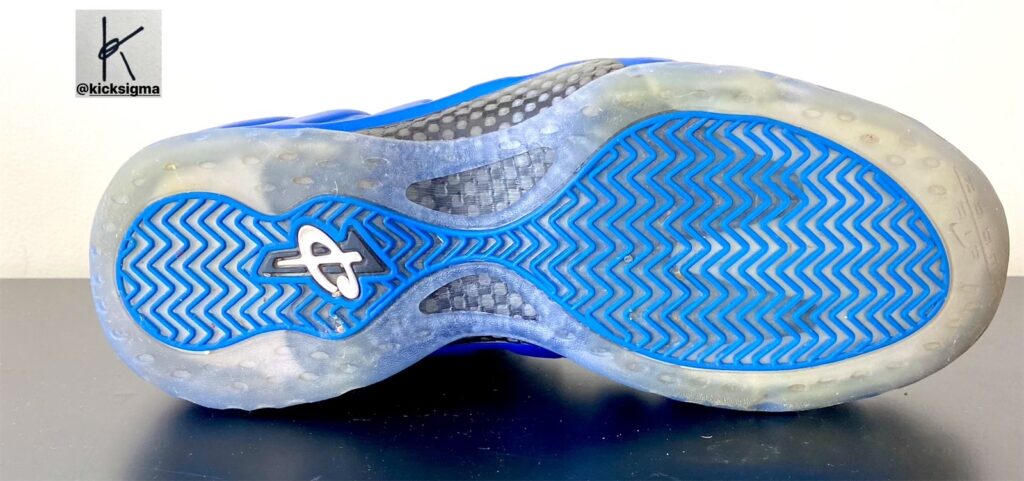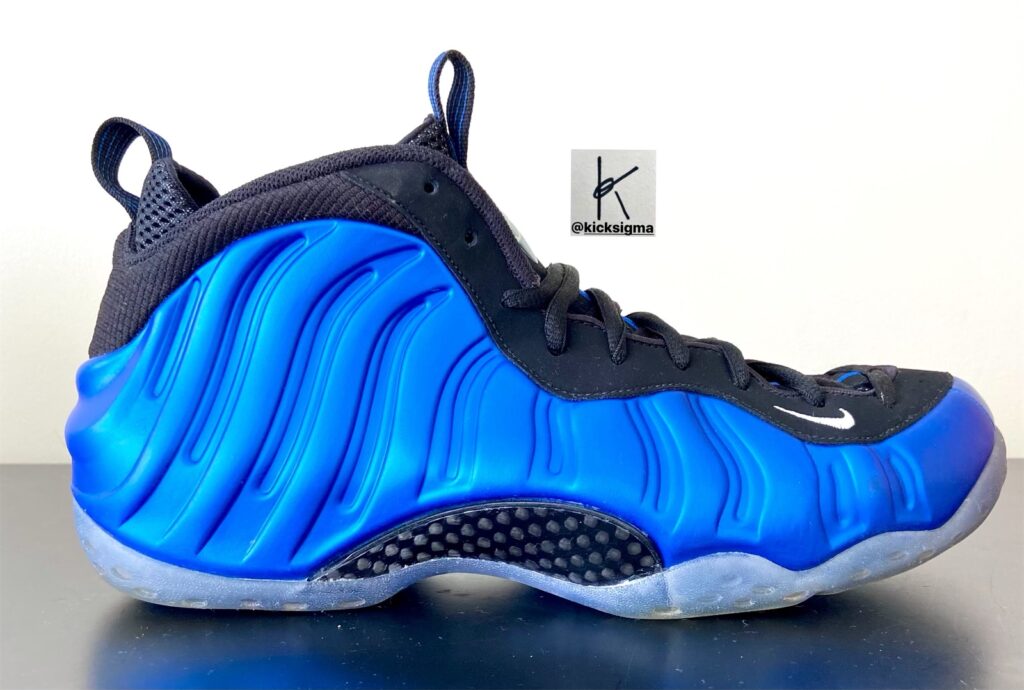
QUICK FACTS
Player: Anfernee “Penny” Hardaway
Colorway: dark neon royal/white/black
Original Release: 1997
Original Price: $180 (about $332 in 2022)
Designer: Eric Avar
Release Type: general release
Weight: 17.8 ounces
We review products independently, but we may earn affiliate commissions from purchases made through links on this page.
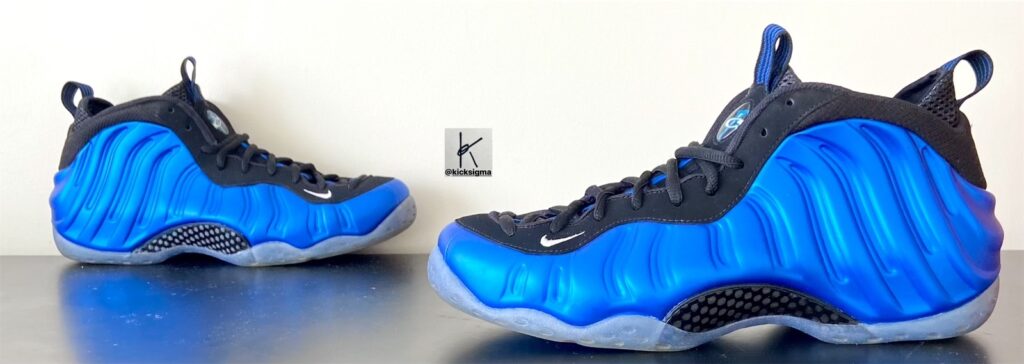
The Backstory
1997 brought us the first shoe to use Foamposite technology, the Nike Air Foamposite One. Worn by Penny Hardaway, the Foamposite One ushered in an era of synthetic sneakers that continue to be popular today.
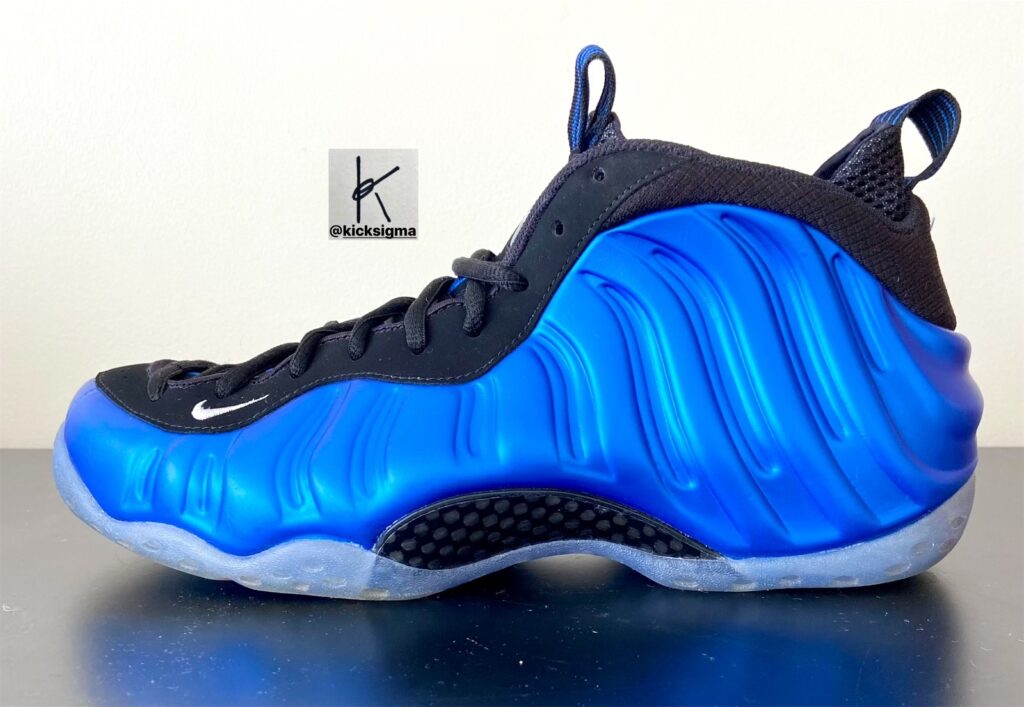
In the mid 90s, many saw Penny Hardaway as the second coming of Michael Jordan. Penny’s sneakers were Nike’s second best selling signature line, surpassed only by his Airness himself. By 1997, Penny was wearing his second signature shoe, the Air Penny II and Nike’s design team was preparing his third signature shoe. Unfortunately, Penny didn’t like any of the prospective designs.
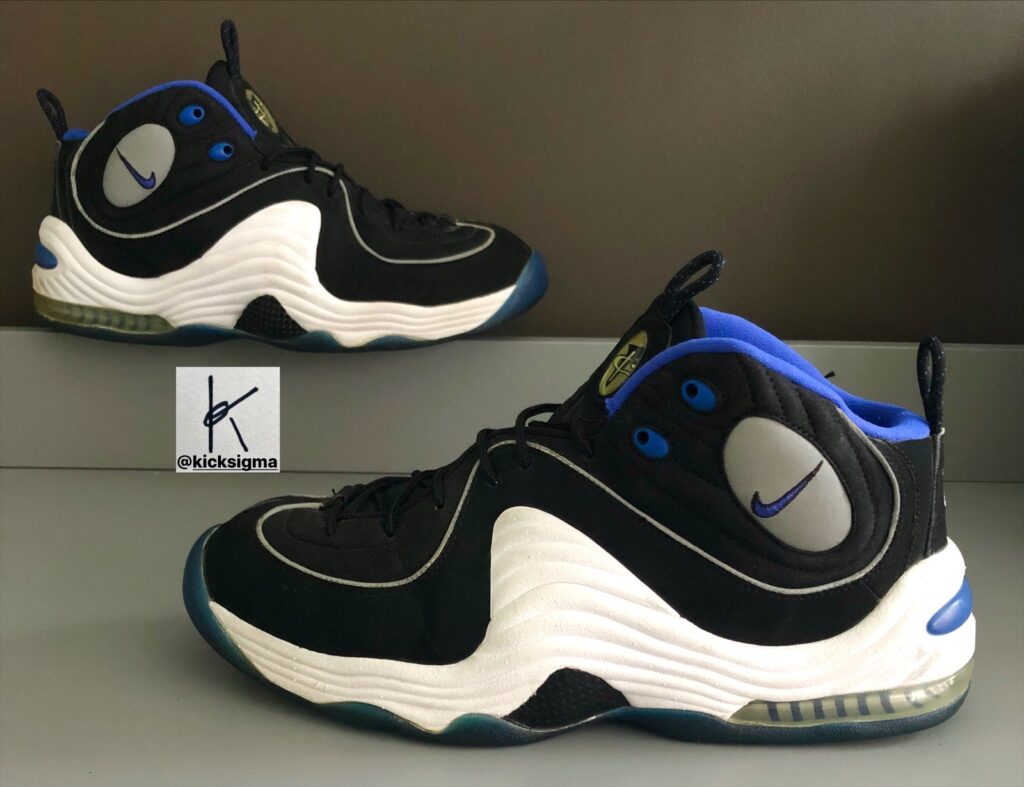
Designer Eric Avar remembers bringing a bag of sample shoes to see if anything caught Penny’s eye. Nothing did. At least, not until the very last sneaker in his bag:
“I almost hesitated to take it out, but I did and he grabbed it, and just goes, ‘What is this?!’” Avar recalled. “I said it’s this concept we’re working on. He just stopped me right there, and said ‘That’s it. I want that to be my next shoe.” – Eric Avar
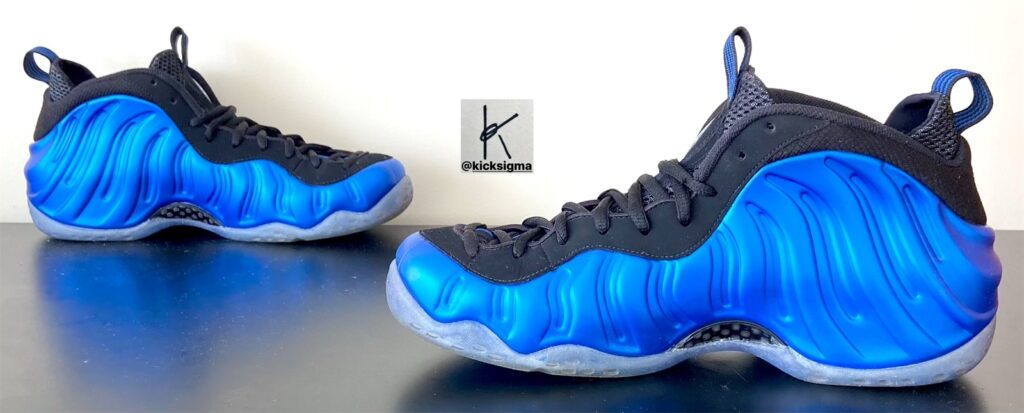
The shoe Avar was talking about was a prototype of the Foamposite One. The Foamposite had originally been designed for Scottie Pippen. The shoe was initally called the Foamposite 33. Pippen however, thought the shoe was ugly and the Foamposite 33 never happened.
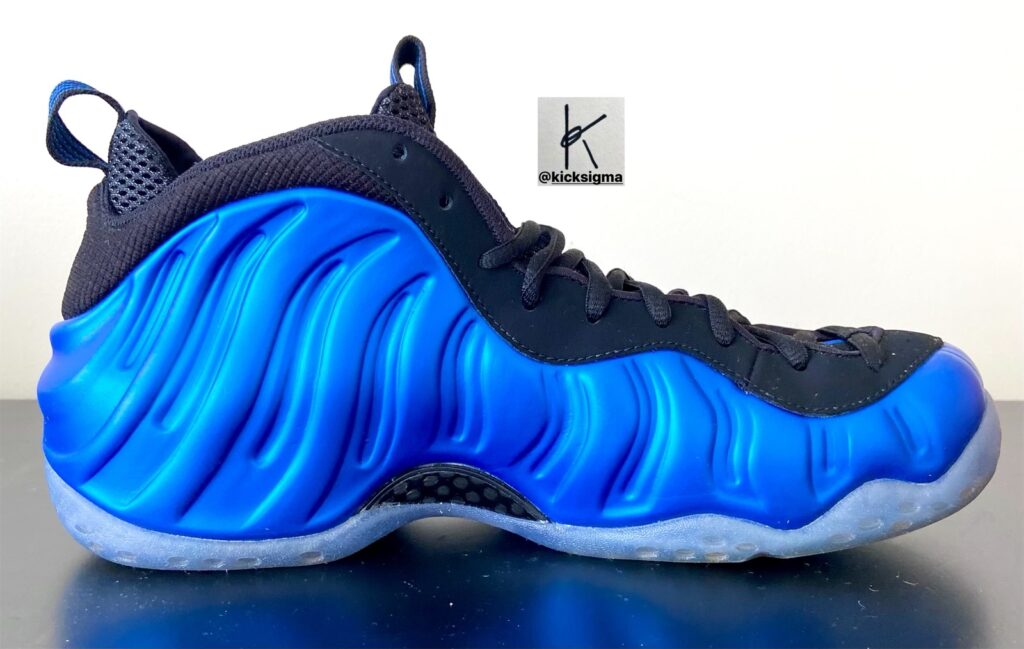
Pippen wasn’t the only one pushing back against the Foamposite. The mold alone cost $750,000 (about $1.4 million today) which alienated many at Nike. Moreover, the eccentric design made it polarizing to the general public. As a result, Avar didn’t have high hopes for the Foamposite when he first showed it to Penny. Fortunately he relented and Hardaway was immediately spellbound.
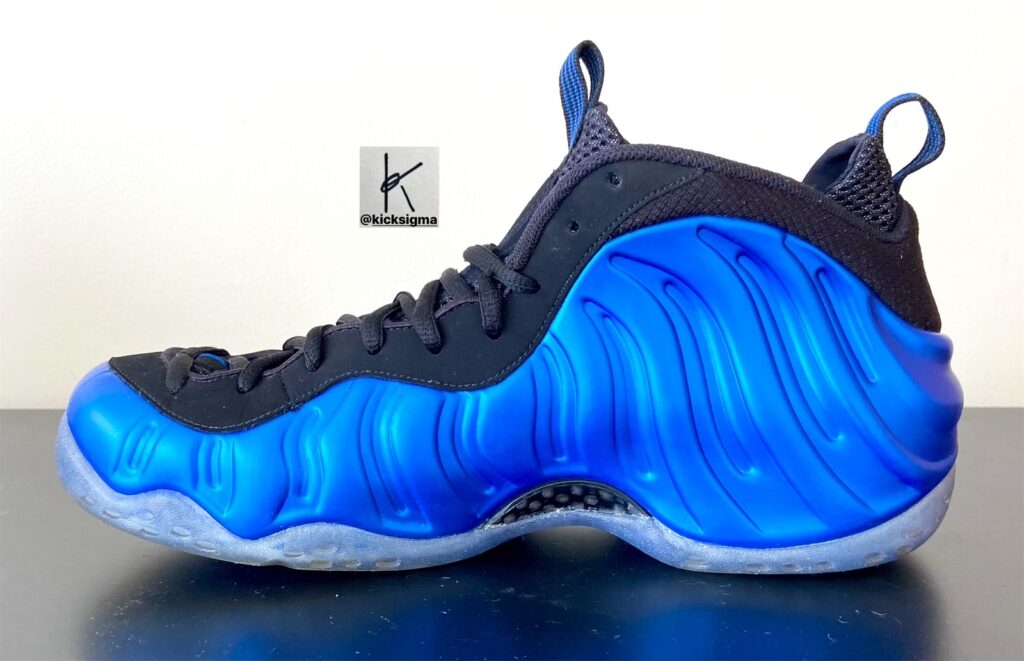
[convertkit form=3021609]
The Inspiration
A garden beetle inspired the design of the Foamposite One. Nike’s Advanced Product Engineering group (A.P.E.), who had also worked on the Air Unlimited, took on the task. The plan was to turn a concept devised in 1993- “what if you literally dipped your foot in this liquid bath of material and it just sucked around your foot?” – to reality.

Against all odds, Korean car manufacturer Daewoo made it possible. They managed to create the original Foamposite mold when Chinese manufacturers balked. In order to deliver forecasted quantities, Nike manufactured Foamposites in different factories through a “very toxic and messy process”. Consequently, many pairs had different shades of blue and different textures depending on when and where they were manufactured.

Design Features
Foamposite material is made of Polyurethane liquid, heated between 130 and 175 degrees Fahrenheit (54 to 79 degress Celsius), then poured into a mold to create the synthetic Foamposite upper of the shoe.
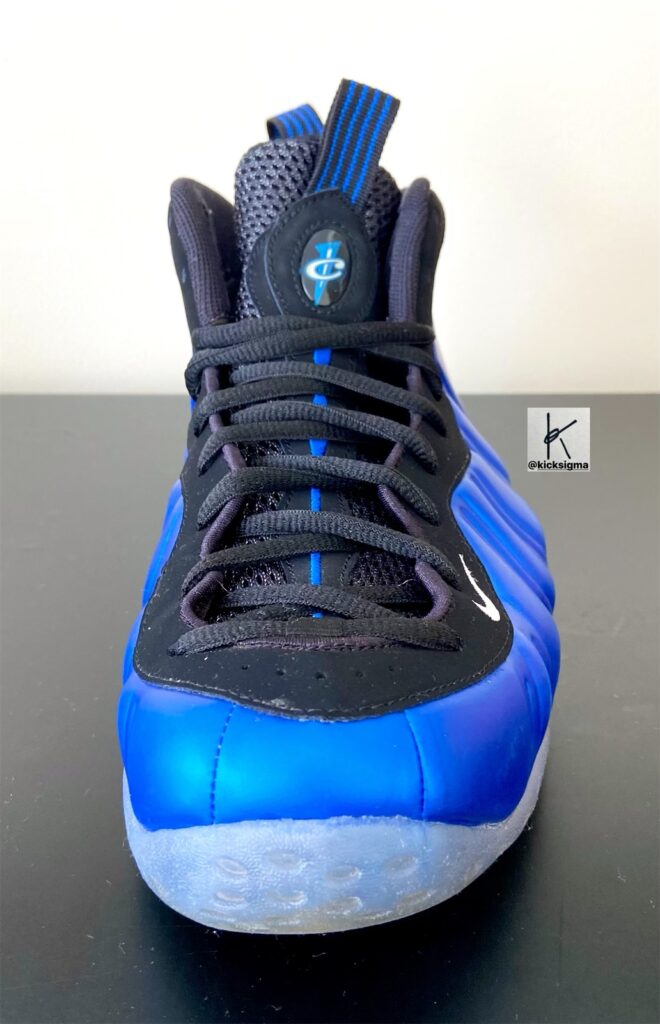
The Foamposite was the first time anyone had ever molded an entire upper. Because the upper consisted of polyurethane instead of leather, it had to be attached to the midsole using glue that was five times stronger than normal. The outcome was a fully integrated upper and midsole.
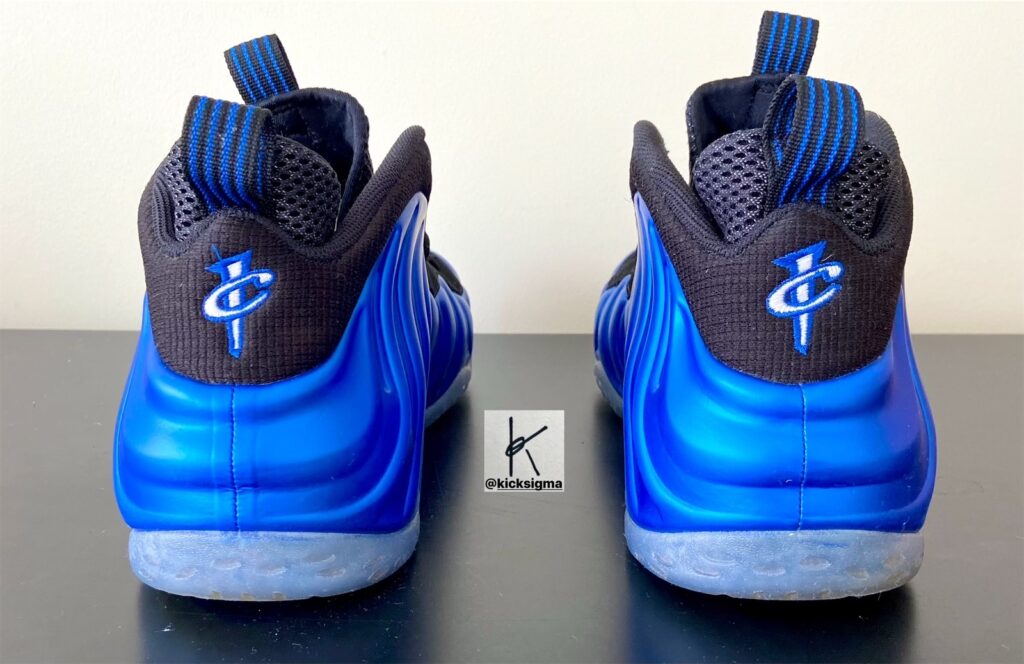
The Foamposite also featured a carbon fiber plate and full length Zoom Air cushioning which was double stacked at the heel. While initially snug and uncomfortable, the Foamposite material softens when worn due to the heat generated from your feet. Eventually, the material contours around the foot to create a customized fit.
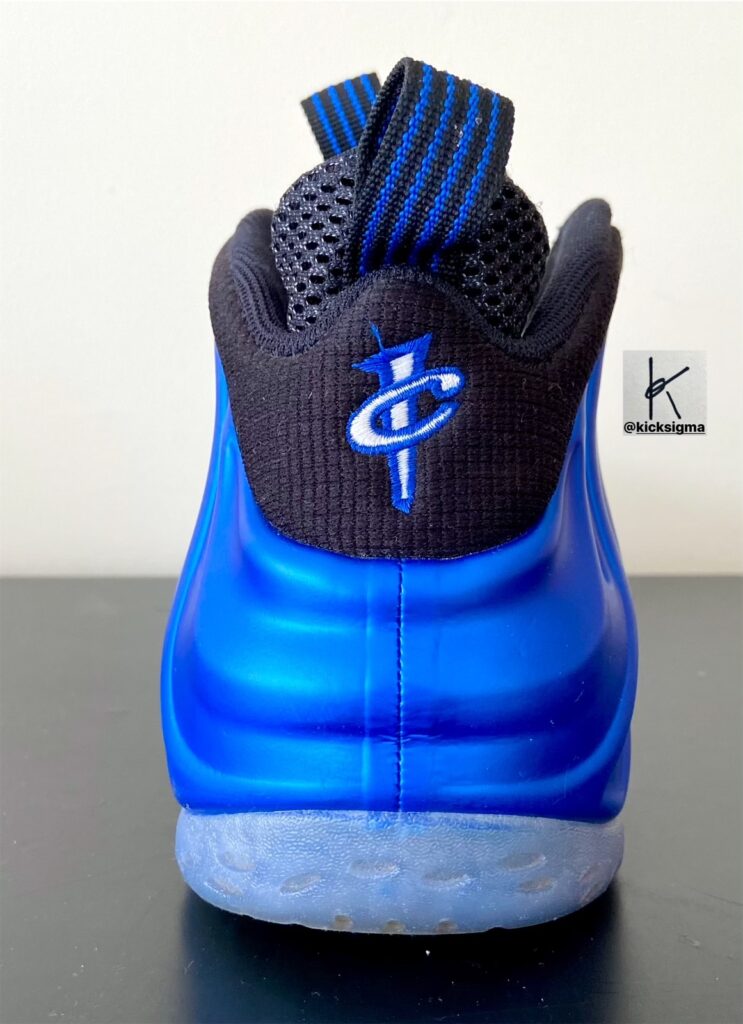
The Hype
The Foamposite One was heavily marketed, appearing in ads featuring Penny Hardaway. They also appeared on the Nike Phone Number ad series. Those ads featured a prototype of the Foamposite One, with a black/royal carbon fiber plate and a toe Swoosh bordered in royal blue. Adding to the hype was the fact that the Foamposite was a highly limited release, and retailed at the then unheard of price of $180.
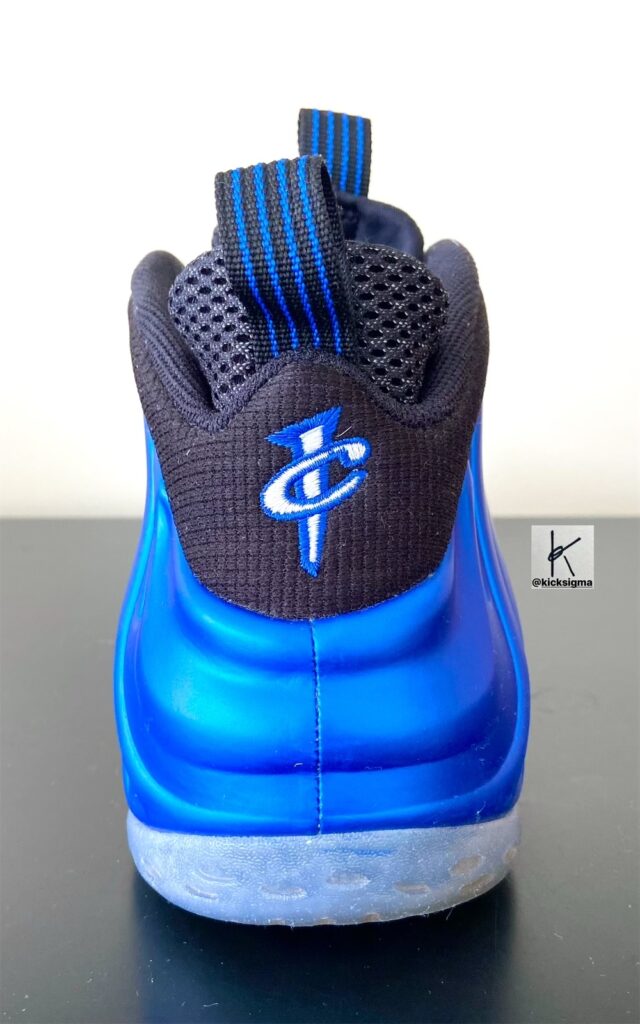
On Court
The Foamposite One made its court debut on March 23, 1997. However it was then Arizona Wildcat Mike Bibby who wore them first in a game against Providence, much to Penny’s chagrin.
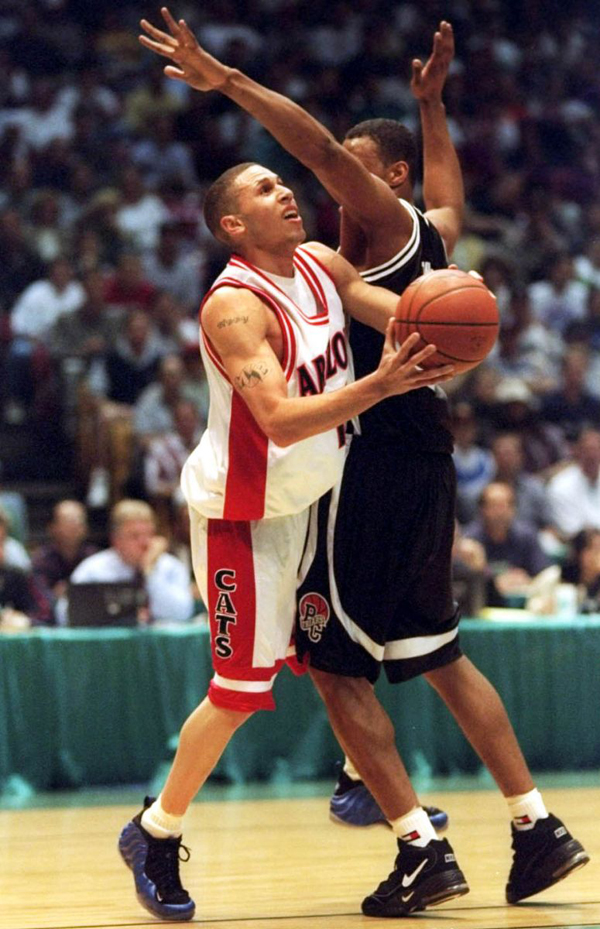
That wouldn’t stop Penny from making his own mark in them a few weeks later. Penny first wore prototype pairs in three different colorways, black, royal and white during the latter part of the regular season before breaking out the royal retail version during the ’97 playoffs.
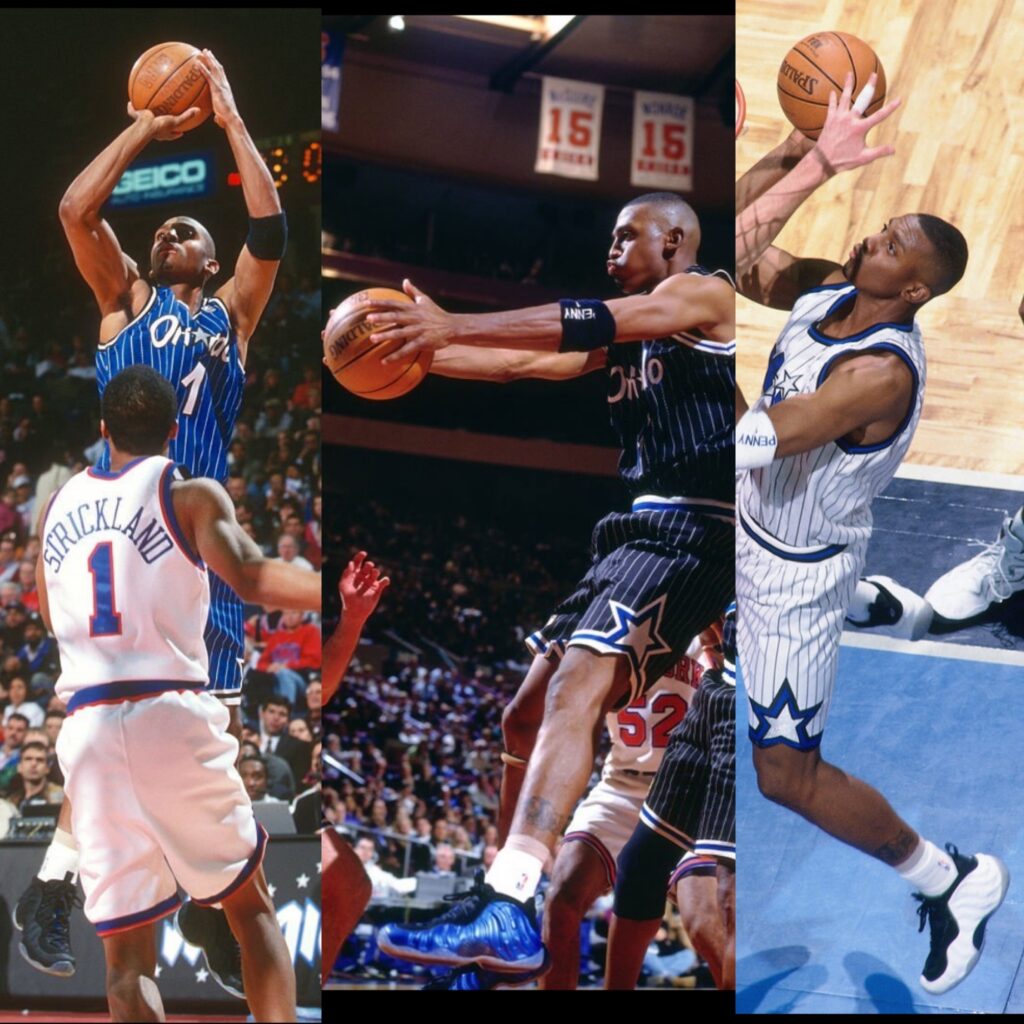
Unfortunately the Foamposite didn’t match the NBA’s strict dress guidelines at the time, as it did not contain enough black, so Penny used a sharpie to color in the grooves. A “sharpie” pair released in 2015.

Despite Penny’s first round heroics (31ppg, 6rpg, 3.4 apg), the Magic would lose to the Miami Heat in 5 games.
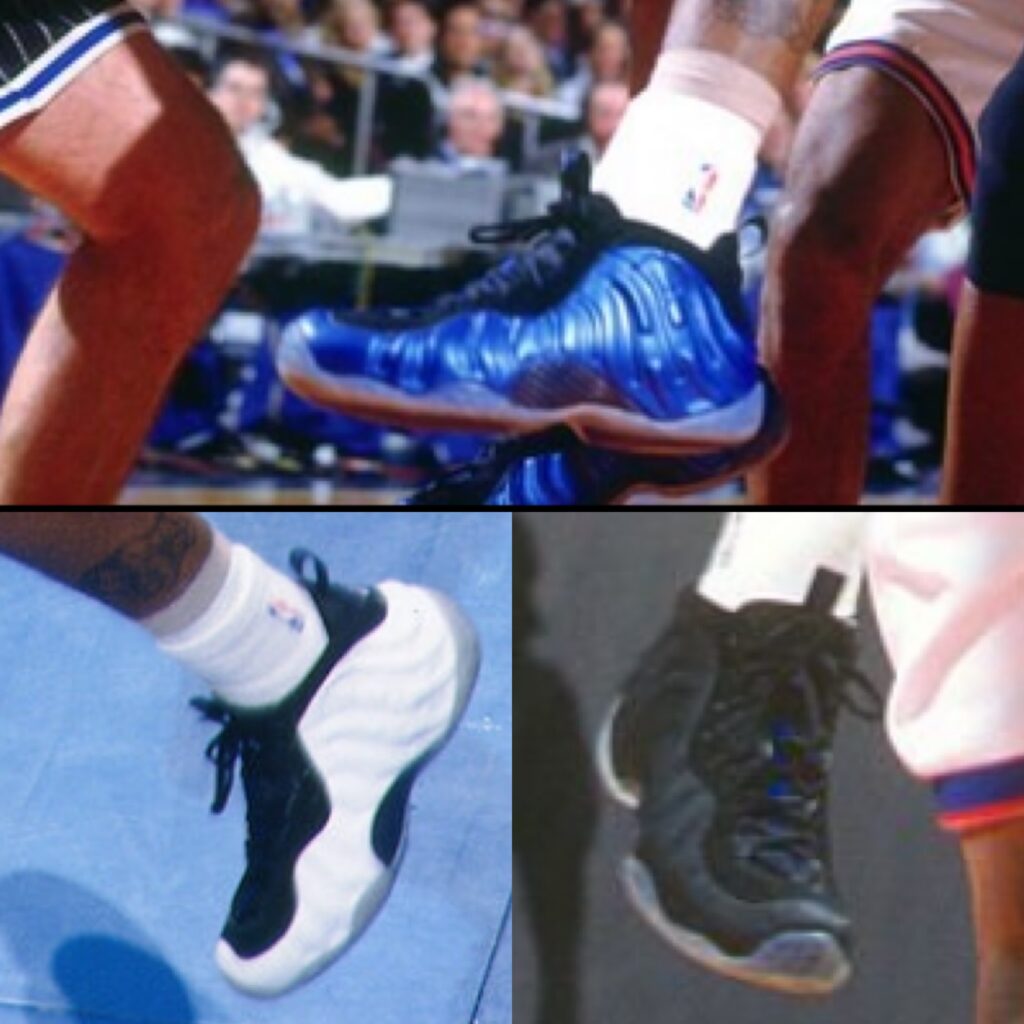
Legacy
The Foamposite One had a lukewarm reception when it originally released. The eccentric design, high price tag, limited availability and lack of Jordan branding or visible Air units contributed to the modest sales. In spite of this, Nike continued using Foamposite material in Penny’s next signature shoe, the Air Penny III, which he wore during the 97-98 season. Tim Duncan also wore the Foamposite Pro in the 1998 All Star Game, perhaps foreshadowing that he’d be the ambassador for the Total Air Foamposite Max that was released later that year.
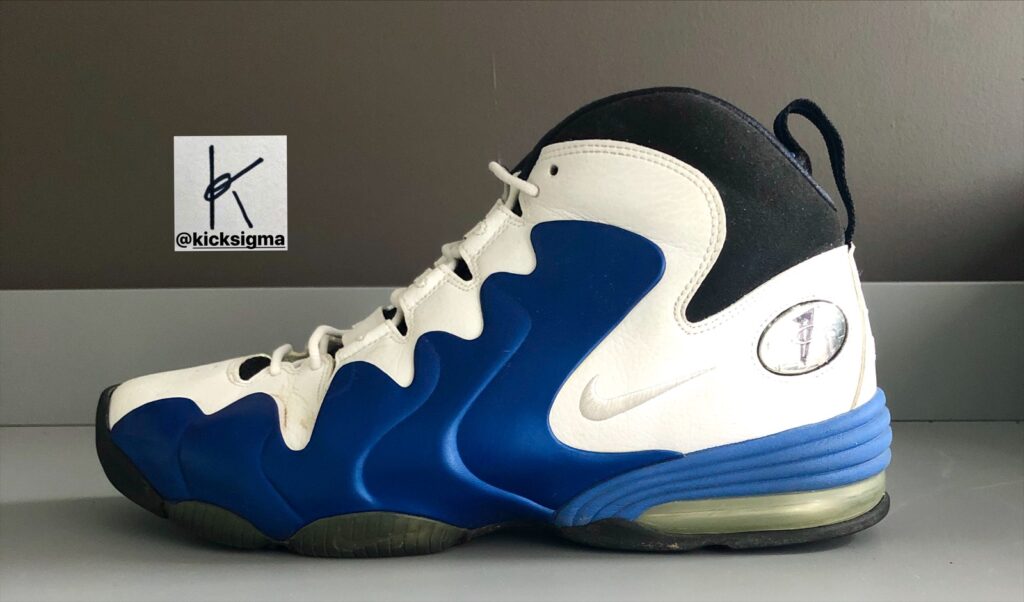
Like most things ahead of their time, it wasn’t until the later, the late 2000s to be specific, that Foamposite popularity hit critical mass.
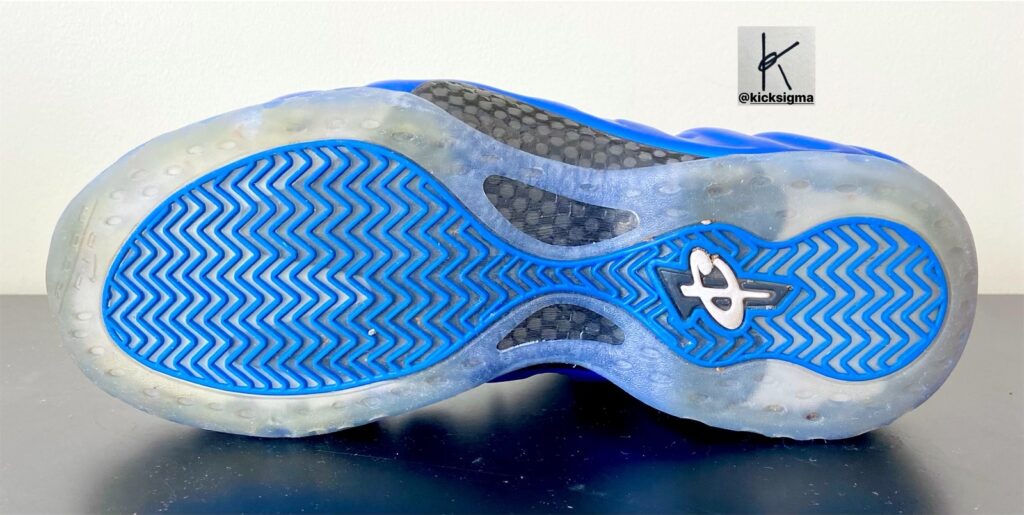
In 2007, Nike retroed the original royal colorway for the first time. A slew of other colorways followed over the years, signaling a surge in popularity that has only begun to wane of late. The royal Foamposite One has since retroed twice more, in 2011 and 2017– the latter in celebration of its 20th anniversary. Unfortunately, Nike has yet to retro any of the prototype versions that Penny wore, or the version from the iconic phone number ads.
